(sold for $38.0)
1628, Vatican, Pope Urban VIII. Copper Quattrino Coin. Saints Paul & Peter. F+
Condition: F+
Mint Place: Rome
Reference: KM-150.
Mint Period: 1626-1628
Denomination: Quattrino
Material: Copper
Diameter: 23mm
Weight: 2.47gm
Obverse: Nimbate busts of Saint Peter and Saint Paul.
Legend: S. PETRVS . S . PAVLVS .
Exergue: . ROMA .
Reverse: Papal tiara above crossed keys and arms of the Pope.
Legend: VRBANVS - VIII PONT M
Authenticity unconditionally guaraneed.
Pope Urban VIII (baptised 5 April 1568 - 29 July 1644), born Maffeo Barberini, was pope from 1623 to 1644. He was the last pope to expand the papal territory by force of arms, and was a prominent patron of the arts and reformer of Church missions. However, the massive debts incurred during his papacy greatly weakened his successors, who were unable to maintain the papacy's longstanding political and military influence in Europe. He was also involved in a controversy with Galileo and his theory on heliocentrism during his reign.
Maffeo Barberini was born in 1568 into the wealthy merchant Barberini family in Florence, Italy. He was educated by the Jesuits and received a doctorate of law from the University of Pisa in 1589.
In 1601, Maffeo, through the influence of an uncle who had become apostolic protonotary, was able to secure from Clement VIII, the appointment as papal legate to the court of King Henry IV of France. In 1604 Clement VIII appointed him archbishop of Nazareth, although this was an honorary position as the Holy Land was under Turkish rule. On the death of his uncle, he inherited his riches, with which he bought a palace in Rome which he made a luxurious Renaissance residence.
Under Clement VIII he himself was made protonotary and nuncio to the French court; Paul V also employed him in a similar capacity, afterwards raising him, in 1606, to Cardinal-Priest of S. Pietro in Montorio and appointing him the papal legate to Bologna.
On 6 August 1623, after the papal conclave following the death of Pope Gregory XV, he was chosen as Gregory's successor and took the name Urban VIII.
Upon his election, Zeno, the Venetian envoy, wrote the following description of him:
The new Pontiff is 56 years old. His Holiness is tall, dark, with regular features and black hair turning grey. He is exceptionally elegant and refined in all details of his dress; has a graceful and aristocratic bearing and exquisite taste. He is an excellent speaker and debater, writes verses and patronises poets and men of letters.
Urban's papacy covered twenty-one years of the Thirty Years' War and was an eventful one even by the standards of the day. He canonised Elizabeth of Portugal and Andrew Corsini and issued the Papal bulls of canonisation for Ignatius Loyola and Francis Xavier who had been canonized by his predecessor, Gregory XV.
Despite an early friendship and encouragement for his teachings, Urban was responsible for summoning Galileo to Rome in 1633 to recant his work.
He practiced nepotism on a grand scale; various members of his family were enormously enriched by him, so that it seemed to contemporaries as if were establishing a Barberini dynasty. He elevated his brother Antonio Marcello Barberini (Antonio the Elder) and then his nephews Francesco Barberini and Antonio Barberini (Antonio the Younger). He also bestowed upon their brother, Taddeo Barberini, the honorific title Prince of Palestrina; Palestrina being the comune owned by the Barberini family. During the Wars of Castro, Taddeo was also appointed Commander of the Papal Army.
Urban was a skilled writer of Latin verse, and a collection of Scriptural paraphrases as well as original hymns of his composition has been frequently reprinted.
A 1638 papal bull protected the existence of Jesuit missions in South America by forbidding the enslavement of natives who joined a mission community. At the same time, Urban repealed the Jesuit monopoly on missionary work in China and Japan, opening these countries to missionaries of all orders.
Urban VIII issued a 1624 papal bull that made the use of tobacco in holy places punishable by excommunication; Pope Benedict XIII would later repeal the ban.
Urban's military involvement was aimed less at the restoration of Catholicism in Europe than at adjusting the balance of power to favour his own independence in Italy. In 1626 the duchy of Urbino was incorporated into the papal dominions, and, in 1627, when the direct male line of the Gonzagas in Mantua became extinct, he controversially favoured the succession of the Protestant Duke Charles of Nevers against the claims of the Catholic Habsburgs. He also launched the Wars of Castro (1641) against a fiefdom of Odoardo Farnese, Duke of Parma and Piacenza, whom he excommunicated; Castro was destroyed and its duchy incorporated into the Papal States.
He was the last pope to extend the papal territory, and fortified Castelfranco Emilia on the Mantuan frontier and the Castel Sant'Angelo in Rome. Urban also established an arsenal in the Vatican, an arms factory at Tivoli and fortified the harbour of Civitavecchia.
For the purposes of making cannon and the baldacchino in St Peters, massive bronze girders were pillaged from the portico of the Pantheon leading to the well known lampoon: quod non fecerunt barbari, fecerunt Barberini, "what the barbarians did not do, the Barberini did."
Only 1$ shipping for each additional item purchased!

|
Posted by:
anonymous 2014-06-11 |
1 Ducat States of Germany Gold
group has 7 coins / 5 prices
⇑
1 Groat Kingdom of England (927-1649,1660-1707) Silver Henry ...
group has 12 coins / 10 prices
⇑







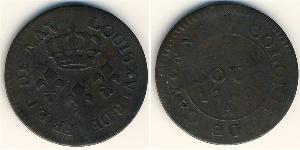

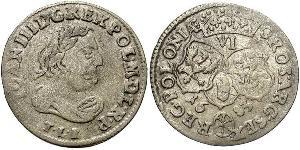


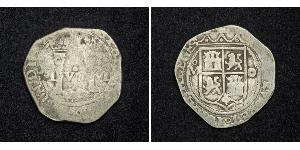
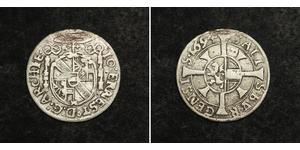

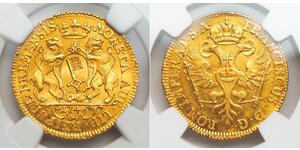

-300-150-RhTBwcI00_AAAAEnZaBK7thZ.jpg)






